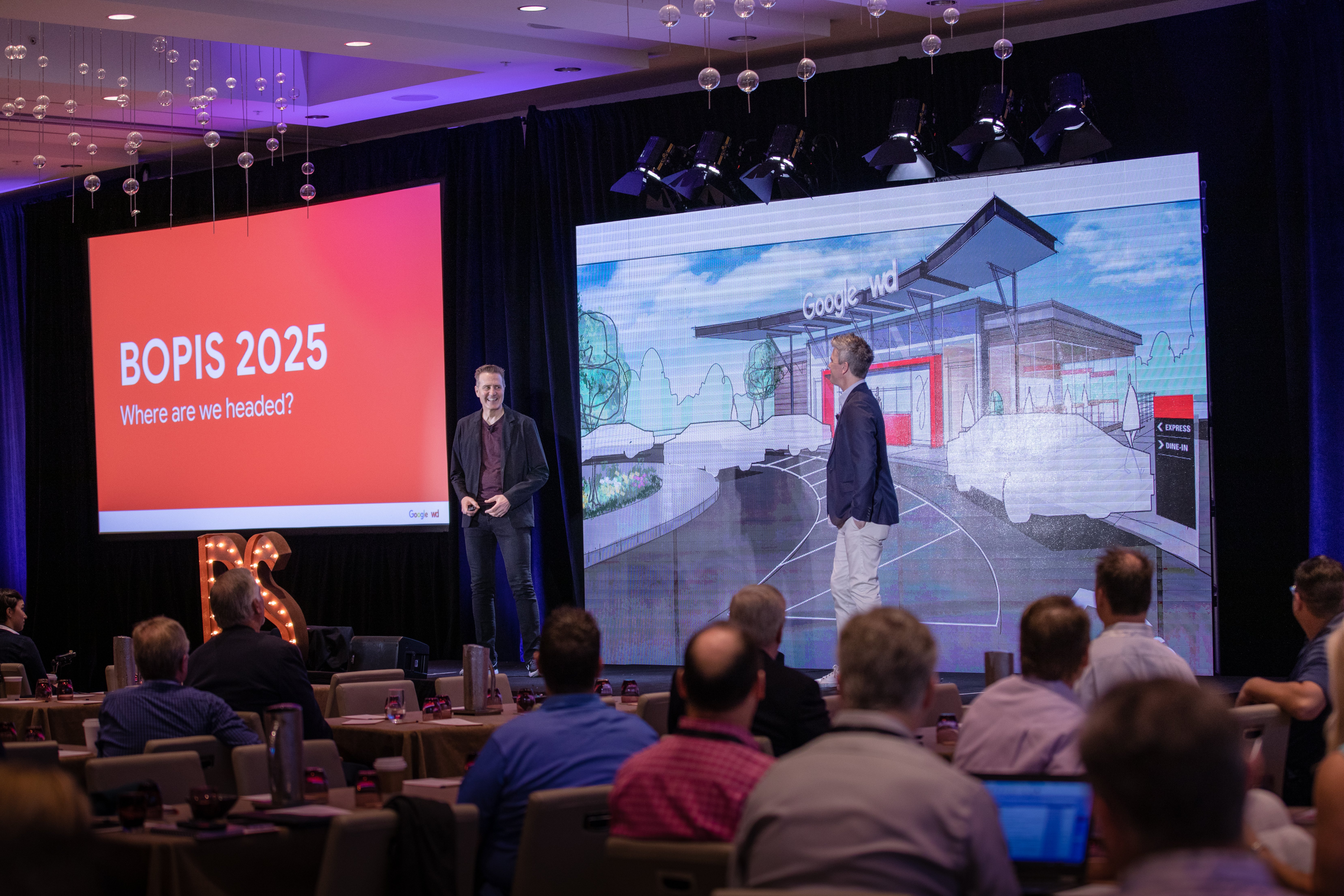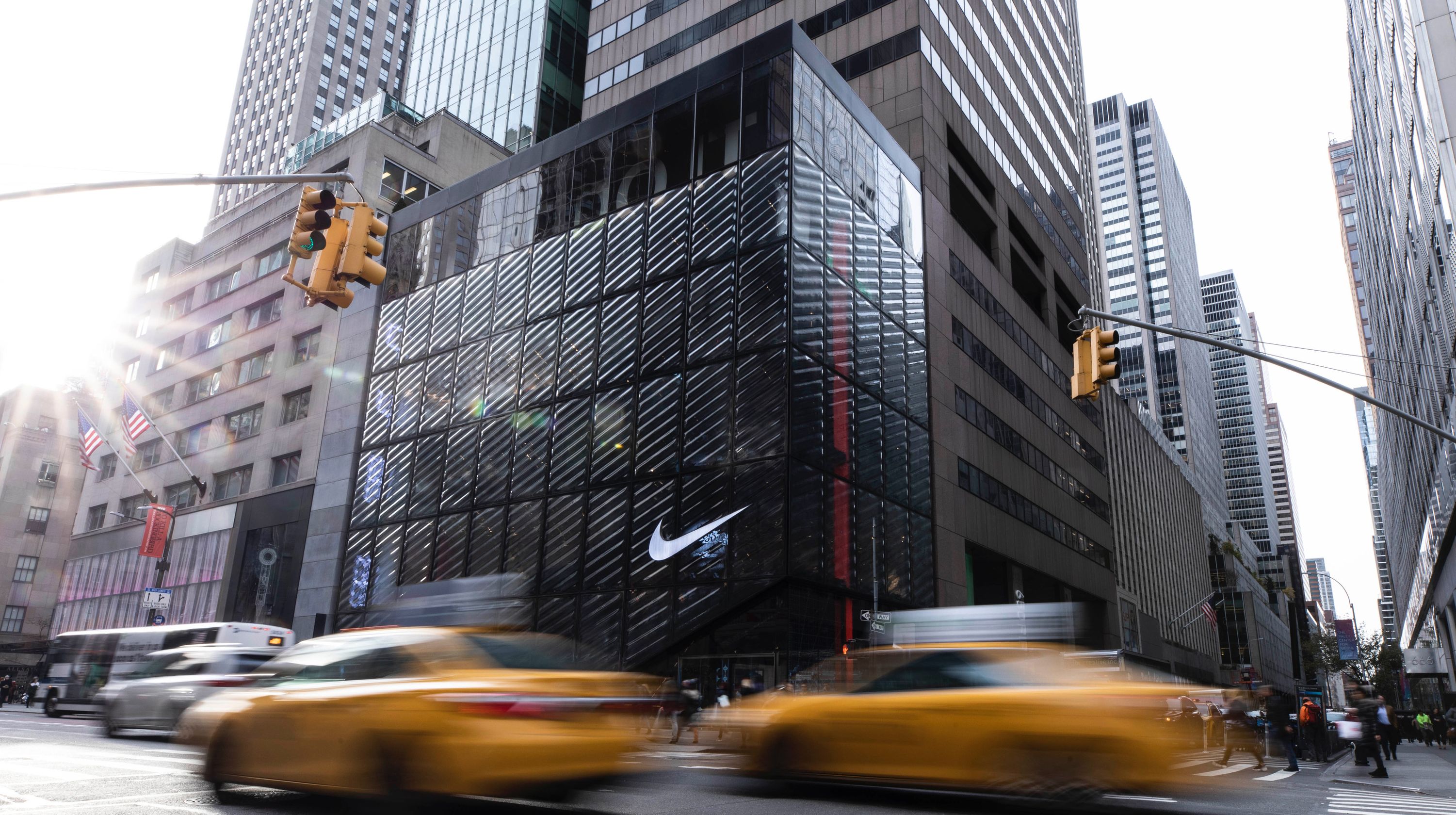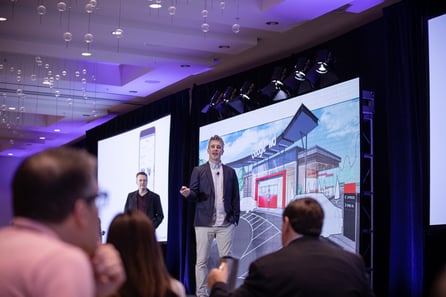During the 2018 Holiday season, the amount that customers were ordering an item online before collecting it at a store was up 47 percent from the same period a year before.
While buy-online-pickup-in-store (BOPIS) is far from a new concept, it’s undoubtedly a trend that will continue to grow.
“It’s really taking off and I think by next holiday season, it’s going to be up another 50 percent,” Lee Peterson. In a recent joint presentation with Google’s Retail Innovation Lead, Chris Lydle, the WD Partners EVP, Thought Leadership and Marketing stressed customers have wanted greater innovation around BOPIS for some time.

Lee Peterson and Chris Lydle talk about the big potential of BOPIS
“Out of 14 different digital retail technologies, this was their number one request by far,” Peterson explained, referring to a study the consulting firm conducted with 4,000 shoppers several years ago. “We need to get to the point where we’re much more customer-focused than we have been before.”
Here are four steps retailers need to take to get more out of their BOPIS performance.
1. Understand How Big BOPIS Will Become
In 2018 alone, BOPIS was up 119 percent. This contrasts with just a 21 percent sales increase among “brick-and-click” models — retailers that sell both online and in-store.
“The consumer preference for this method of purchasing is booming,” Lydle said, explaining customers are choosing to forgo delivery costs, especially if a store is conveniently located. “At the end of the day, they’re thinking about what resources they need to spend to get the thing they want. It’s a combination of time and money.”
As much as BOPIS seems to be on the rise right now, it’s still early days for the trend — especially in the US. While adoption rates are as high as 69 percent globally, Lydle said “adoption is actually a lot lower in the US than it is in Europe. We have a lot of catching up to do in terms of what the consumer is looking for.”
To illustrate his point further, Lydle referred to Walmart’s major success since investing heavily in BOPIS. The consequent boost to grocery sales helped the big box retailer become the nation’s third-biggest online retailer, leapfrogging Apple in the process.
“Walmart is going big in this area,” he said. “You’re not taking out ads in the Super Bowl with millions’ worth of licensing unless you know it’s an important and meaningful mechanism.”
2. Upgrade the Digital Experience
For companies to maximize the likelihood of attracting BOPIS sales, they’ll need to understand that online real estate is just as important, if not more important, than physical.
According to Lydle, there’s been a 600 percent jump in the number of Google searches including the phrases “can I buy?” and “near me.” If retailers can’t capture the attention of potential customers from the search bar, they’re going to miss out on sales.
“These people are looking to take action,” Lydle said. “How do we take advantage of this customer that’s exhibiting serious buying intent?”
One of the biggest opportunities currently available to brands is to dramatically improve the way their websites operate, especially on mobile. “You’ve got to make it a seamless, painless process,” Lydle said, highlighting 69 percent of users abandon a site or app because there are too many steps in the purchasing process.
He also stressed brands need to focus less on their app-based strategy.
“While apps are awesome, they have very low penetration rate. You might only get five to 10 percent of your customer base downloading that app. You need to think about how to leverage all the capabilities on everybody’s phone to access that other 90 percent of your audience,” Lydle said.
3. Build Better Online / In-Store Cohesion
Though there are companies that have achieved remarkable success with an app-based strategy. Nike is one such example, for two main reasons. Not only have they invested a lot in creating a digital platform and community that fosters an evangelical following, but they’ve also introduced truly innovative in-store enhancements conducive to BOPIS sales.
The new flagship in New York, as well as the Nike Live concept in Hollywood are both examples of stores where customers can collect pre-purchased items from designated lockers. Exclusive and personalized in-app promotions also prompt customers to make a purchase or reserve an item, consequently encouraging a visit to the store.

The new Nike flagship in New York
Innovations from Nike and others in this area are prime examples of how picking up an item in-store can be transformed from a mere convenience into an experience. It’s a far cry from the hassle customers still encounter when completing a BOPIS sale, largely because many stores are simply not optimized for pickup.
“Some retail experiences are atrocious,” Lydle said. Peterson agreed, saying it’s no longer acceptable to merely reserve a few spots in the parking lot for BOPIS customers, expect them to walk in-store, stand in a line and wait longer than a few minutes for an order to be filled. The last thing brands want, Peterson said, is for customers to think BOPIS “isn’t worth it.”
Store development needs to start embracing greater integration of digital capabilities at pickup. Allowing options for check-in with Google or Apple Pay, QR codes, or NFC capabilities, Lydle mentioned, are simple ways of avoiding confusion and boosting convenience once a customer arrives.
4. Get Creative With Emerging Technologies
One thing moving faster than the adoption rate of BOPIS is the extent to which technology is impacting the industry.
Retailers not only have to be across these enhanced capabilities hitting the market, but should be actively thinking about novel and unorthodox ways future technology can be used to optimize experience.
 |
| Chris Lydle, Google |
One such example relating to BOPIS is real-time GPS tracking — something Google is currently working to improve with its navigation app, Waze. Integrating a customer’s location into store processes could allow for quicker, personalized, and even automated order fulfillment. Combined with a dedicated BOPIS zone and concierge staff, item collection could be a matter of seconds. Visitors wouldn’t even need to get out of their cars.
Development in voice technology is another element brands should be taking into consideration. Not only will it continue to change the way customers order goods, but it will eventually become a mainstay in the way they interact with a store.
“One of the other things that’s really wonderful about voice-driven tech is that it leaves a transcript behind,” Lydle explained in an interview following the presentation. “You might be getting very negative sounding feedback from folks at a certain location. Voice-driven tech creates opportunities for transcript analysis.”
BOPIS = Easy To Do, Essential To Have
At a quick glance, BOPIS may not seem like an exciting innovation. As far as retail’s fast-paced evolution goes, it certainly lacks a certain appeal. However, it’s undeniably a very necessary component of retail’s maturation and future transformation.
Enhancing and altering the store to make it BOPIS-friendly will be just one part of making the customer experience as convenient and personalized as possible. Should brands fail to keep up with growing consumer demand for the trend, their stores may gradually become less and less an essential part of the buyer journey.
“The real challenge for retailers across the board is how to put the product the person wants in their hands, at the exact moment that they want it,” Lydle said. “That’s the new consumer expectation.”
---------------------------------------------------------
Designing your stores for BOPIS will be a topic we will explore at RetailSpaces '19 taking place September 15-17 in Carlsbad, CA. Request an invite here.

Posted by
Physical Retail Reimagined.
RetailSpaces is a community for store development and design innovators.
March 29-31, 2026 | San Antonio, TX
Learn More!








Comments